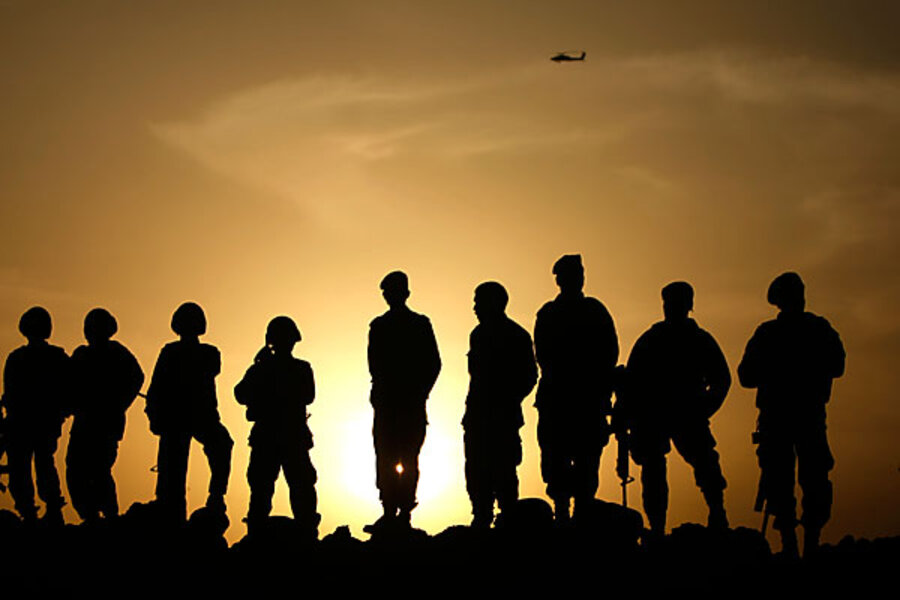Can Afghanistan Taliban absorb blow to Quetta Shura?
Loading...
| Kabul, Afghanistan
The Afghan Taliban now faces what may be its biggest test in recent years, with 7 of 15 members of its leadership council, the Quetta Shura, recently captured by Pakistani authorities.
From its perch in Pakistan, the Quetta Shura is said to act as a nerve center for all of the Afghan Taliban’s operations, formulating military and political strategy, appointing field commanders, and managing a shadow government.
Yet still in tact are a roster of experienced leaders who can take their arrested comrades’ place as well as several subcommittees that each oversee sections of the country.
This report on the Taliban’s leadership structure is based on interviews with two Taliban figures who claim to belong to the council and with Afghan intelligence officials.
A wide-reaching organization
The Quetta Shura is described as assigning and replacing field commanders in Afghanistan, overseeing the Taliban’s parallel government in Afghanistan, and fielding complaints from Taliban members. In some cases the Taliban’s control over some parts of Afghanistan is so strong that nongovernmental organizations working there – such as the United Nation’s World Food Program – have first sought permission from the Quetta Shura to enter the region.
In addition to the top council, the Taliban relies on a number of other shuras to oversee the insurgency. All of these councils answer to the supreme body in Quetta, and membership in the different councils or shuras sometimes overlaps.
Mullah Abdul Qayoum Zakir, the movement’s leading military commander and a member of the Quetta Shura, who was arrested in Pakistan’s recent crackdown, headed two such bodies.
Like the top council, these two shuras are based in Quetta, Pakistan, and are responsible for military affairs in southern and western Afghanistan, including resistance to the ongoing United States-led offensive in the town of Marjah.
A third council is based in the North Waziristan town of Miram Shah, where insurgent leader Sirajuddin Haqqani directs the Taliban’s operations in the southeast, according to former insurgents and Afghan intelligence officials. Mr. Haqqani is considered one of the most dangerous foes of the Western forces, and has been behind a number of high-profile attacks in recent years.
[A Pakistani Taliban commander in North Waziristan was killed in a suspected CIA missile strike in northwest Pakistan, officials told the Associated Press Thursday. Mohammed Qari Zafar, wanted for a deadly 2006 bombing of the US consulate in Karachi, was among at least 13 people killed Wednesday when three missiles slammed into a compound and a vehicle in the Dargah Mandi area of the North Waziristan on the border with Afghanistan, two Pakistani intelligence officials said.]
A fourth shura, based in the Pakistani city of Peshawar, serves as the hub for Taliban operations in the eastern and northern parts of Afghanistan. Maulavi Abdul Kabir, the Taliban’s governor of Nangarhar Province when the group was in power, headed this body, according to Afghan and US intelligence officials. Maulavi Kabir was also caught in the Pakistani sweep.
Can the leadership spring back?
Some Taliban figures who do not belong to the Quetta Shura still hold important roles. One example is Qudratullah Jamal, who deals with fundraising and outreach and is believed to be based in Pakistan. Another is Hafez Majid, who has headed a number of military committees over the years.
While the recent crackdown may put pressure on the Taliban, the movement has survived the loss of senior leaders before.
In early 2009, Pakistani authorities announced that they had captured Ustad Yasir, at the time the Taliban’s chief of military operations. His current whereabouts are unknown. In 2007, Pakistani officials captured Mullah Obaidullah, then considered the movement’s No. 2. Other senior leaders have been killed on the battlefield in Afghanistan.
The current sweep, however, marks the first time so many members of the leadership have been apprehended at once.
-----





